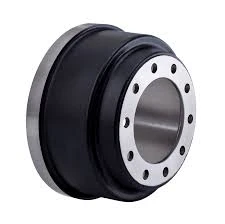
-
 Afrikaans
Afrikaans -
 Albanian
Albanian -
 Amharic
Amharic -
 Arabic
Arabic -
 Armenian
Armenian -
 Azerbaijani
Azerbaijani -
 Basque
Basque -
 Belarusian
Belarusian -
 Bengali
Bengali -
 Bosnian
Bosnian -
 Bulgarian
Bulgarian -
 Catalan
Catalan -
 Cebuano
Cebuano -
 Corsican
Corsican -
 Croatian
Croatian -
 Czech
Czech -
 Danish
Danish -
 Dutch
Dutch -
 English
English -
 Esperanto
Esperanto -
 Estonian
Estonian -
 Finnish
Finnish -
 French
French -
 Frisian
Frisian -
 Galician
Galician -
 Georgian
Georgian -
 German
German -
 Greek
Greek -
 Gujarati
Gujarati -
 Haitian Creole
Haitian Creole -
 hausa
hausa -
 hawaiian
hawaiian -
 Hebrew
Hebrew -
 Hindi
Hindi -
 Miao
Miao -
 Hungarian
Hungarian -
 Icelandic
Icelandic -
 igbo
igbo -
 Indonesian
Indonesian -
 irish
irish -
 Italian
Italian -
 Japanese
Japanese -
 Javanese
Javanese -
 Kannada
Kannada -
 kazakh
kazakh -
 Khmer
Khmer -
 Rwandese
Rwandese -
 Korean
Korean -
 Kurdish
Kurdish -
 Kyrgyz
Kyrgyz -
 Lao
Lao -
 Latin
Latin -
 Latvian
Latvian -
 Lithuanian
Lithuanian -
 Luxembourgish
Luxembourgish -
 Macedonian
Macedonian -
 Malgashi
Malgashi -
 Malay
Malay -
 Malayalam
Malayalam -
 Maltese
Maltese -
 Maori
Maori -
 Marathi
Marathi -
 Mongolian
Mongolian -
 Myanmar
Myanmar -
 Nepali
Nepali -
 Norwegian
Norwegian -
 Norwegian
Norwegian -
 Occitan
Occitan -
 Pashto
Pashto -
 Persian
Persian -
 Polish
Polish -
 Portuguese
Portuguese -
 Punjabi
Punjabi -
 Romanian
Romanian -
 Russian
Russian -
 Samoan
Samoan -
 Scottish Gaelic
Scottish Gaelic -
 Serbian
Serbian -
 Sesotho
Sesotho -
 Shona
Shona -
 Sindhi
Sindhi -
 Sinhala
Sinhala -
 Slovak
Slovak -
 Slovenian
Slovenian -
 Somali
Somali -
 Spanish
Spanish -
 Sundanese
Sundanese -
 Swahili
Swahili -
 Swedish
Swedish -
 Tagalog
Tagalog -
 Tajik
Tajik -
 Tamil
Tamil -
 Tatar
Tatar -
 Telugu
Telugu -
 Thai
Thai -
 Turkish
Turkish -
 Turkmen
Turkmen -
 Ukrainian
Ukrainian -
 Urdu
Urdu -
 Uighur
Uighur -
 Uzbek
Uzbek -
 Vietnamese
Vietnamese -
 Welsh
Welsh -
 Bantu
Bantu -
 Yiddish
Yiddish -
 Yoruba
Yoruba -
 Zulu
Zulu
Understanding the Functionality of Rear Drum Brake Backing Plates in Vehicles
The Rear Drum Brake Backing Plate An Essential Component of Vehicle Safety
In the realm of automotive engineering, safety and efficiency are paramount. One of the unsung heroes of a vehicle's braking system is the rear drum brake backing plate. Although often overlooked, this critical component plays a significant role in ensuring reliable braking performance and overall vehicle safety.
What is a Rear Drum Brake Backing Plate?
The rear drum brake backing plate is a flat, typically circular piece of metal that serves as the foundation for the drum brake assembly. It is mounted to the rear axle of a vehicle and acts as a structural support for various brake components, including the brake shoes, springs, and adjusters. The backing plate is designed to withstand the considerable forces generated during braking while providing a stable platform for the brake system to function effectively.
Functionality and Design
The primary function of the backing plate is to provide a surface against which the brake shoes can press. When the driver engages the brakes, hydraulic pressure forces the brake shoes outward against the inside of the drum. The backing plate ensures that this action occurs smoothly and efficiently, allowing for effective braking.
Backing plates are typically made from high-strength steel or other durable metal alloys to resist wear and corrosion. The design often includes holes for mounting and can also feature additional slots for ventilation, which helps dissipate heat generated during braking. An efficient heat dissipation system is critical, as overheating can lead to brake fade, reducing braking effectiveness and increasing stopping distances.
Maintenance and Replacement
rear drum brake backing plate

Like all components of a vehicle's braking system, the backing plate requires regular inspection to ensure optimal performance. Over time, they can corrode or become damaged due to exposure to moisture, road salts, and other harsh environmental factors. Signs that a backing plate may need replacement include visible rust, cracks, or misalignment, which can cause uneven wear on the brake shoes and decreased braking efficiency.
When replacing drum brake components, technicians typically inspect the backing plate for any signs of damage. If any irregularities are found, replacing the backing plate during a brake service is advisable to ensure the overall integrity of the braking system.
Importance of Quality
Choosing high-quality backing plates is essential for maintaining a vehicle's braking performance. Aftermarket parts may offer cost savings, but they can sometimes compromise reliability and safety. Manufacturers often engineer original equipment parts to meet stringent safety standards, providing reassurance to vehicle owners.
Opting for quality can prevent premature wear and enhance the lifespan of related brake components, including the drum and brake shoes. A well-maintained brake system not only improves safety but also boosts vehicle performance, contributing to a smoother driving experience.
Conclusion
The rear drum brake backing plate may not be a component that garners much attention, but it is undoubtedly vital for effective braking performance. Understanding the importance of this part can help vehicle owners appreciate the complexity of their braking systems and the need for regular maintenance. By ensuring that all components, including the backing plate, are in optimal condition, drivers can enhance their safety on the road and prolong the lifespan of their vehicles. Always remember in matters of safety, every detail counts, and the backing plate is no exception.
-
What Are Drum BrakesNewsJul.07,2025
-
Understanding Brake Drum MaterialNewsJul.07,2025
-
Semi-Trailer Brake Drum: A Key Component for Extreme Loads and Long-Distance TransportNewsJul.07,2025
-
Drum Brake Pads for SaleNewsJul.07,2025
-
Brake Drums for SaleNewsJul.07,2025
-
Brake Drum ManufacturerNewsJul.07,2025
-
Aluminum Brake Drums: The Future of High-Performance CarsNewsJul.07,2025
